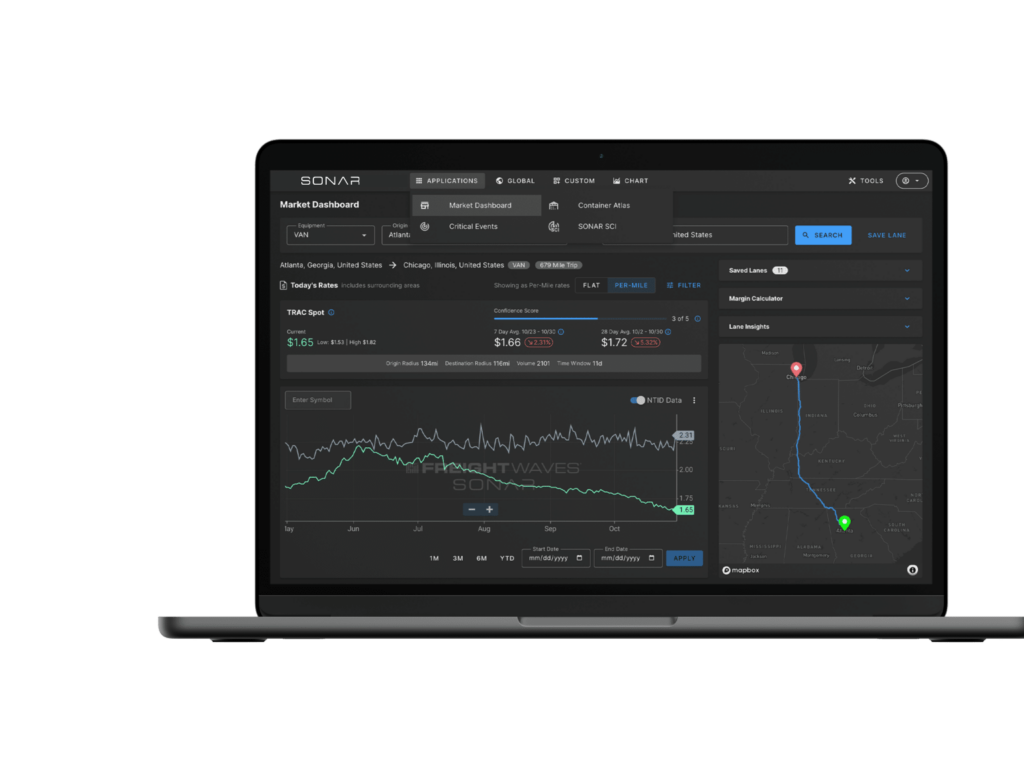Cut costs, then help finance set new budgets
Freight rates in all modes have come down hard since last year, and if you’re a transportation manager or supply chain leader, you probably feel confident about hitting your budget this year. You might be tempted to take the downcycle off, put strategic initiatives on the backburner and enjoy the less frantic environment we’re in now.
But elsewhere in your organization, costs are rising. Particularly if you work at a retailer or as a manufacturer or supplier in any number of industries like food and beverage, CPG, automotive, paper and packaging, or health care, input costs are compressing margins. Meanwhile, the global economy is slowing and demand is weakening. While the transportation budget might not be the line item at the top of the C-suite’s mind this year, profitability is going to be a challenge and finance teams will need all the help they can get to eke out margin gains in 2023.
Supply chain leaders have an opportunity this year to generate further incremental marginal gains and be a hero to their chief financial officers.
How? Shippers are still leaving money on the table in 2023. Spreads between truckload contract rates and spot rates are still much wider than long-term historical trends, implying that contract rates still have room to move down.

(This spread shows spot rates minus contract rates; a negative spread implies that rates are “underwater” and contract rates will fall. A positive spread means that spot rates will lead contract rates higher. Chart: FreightWaves SONAR. To learn more about FreightWaves SONAR, click here.)
Normally, spot rates are within 25 cents per mile of contract rates, but today spot is 69 cents below contract, exerting a powerful downward pressure on the contract market. Non-asset 3PLs in general and freight brokers in particular are ready to drop their sell rates lower if it means they can secure higher volumes — they’re very confident in their ability to buy capacity in this market.
By benchmarking your own rates paid to prevailing market rates and comparing tender acceptance on a granular level, you can identify cost-saving opportunities in your network at a granular level. More importantly, you can remove cost only on lanes where you’re still paying above market (yes, you’re still paying above market), so you don’t have to sacrifice carrier service.
Beyond cost savings: Demand planning and sales and operations
There’s a lot more work that fast, granular supply chain data can do for your organization than simply reducing cost and eking out a hundred basis points of margin on your CFO’s bottom line, though. Put simply, an accurate, continually updating model of the supply chain can serve as a single source of truth across multiple departments in your company, speed the flow of information and align teams that are struggling to manage uncertainty.
We’re in an uncertain macroeconomic environment where one of the biggest questions is whether the Federal Reserve will pivot to a dovish monetary policy in time to stave off an acute recession, or whether it will continue to slow down the velocity of money until unemployment rises and inflation is finally conquered. It’s extremely difficult, especially with multiple years of COVID-distorted comps in the rearview mirror, for sales and operations teams to forecast demand and optimize inventories for margin.
Midterm demand planning is an especially thorny problem: Scan data, surveys and recent sales can tell the story of the recent past with some insight into the near future. Macroeconomic forecasts and internal historical data can help with long-term planning.
But the midterm outlook has always been an informational and operational black hole for many retailers and suppliers: What will summer peak, back to school and the fourth quarter look like?
SONAR includes near-time truckload volume, capacity and rate data that is highly responsive to immediate consumer demand and upstream replenishment. FreightWaves analysts have used SONAR data to make a number of contrarian macroeconomic calls that turned out to be right, including the historic explosion in goods spending that began in the second quarter of 2020.
Leveraging that data across your organization — not just in your transportation team, but in sales and operations and strategic finance — can create a single source of truth and increase confidence in decision-making.
You’ll understand where freight is moving and why, and gain detailed insight into patterns of production and consumption across the goods economy.
The next 18 months are going to be challenging for companies with exposure to the U.S. consumer, but supply chain leaders have an opportunity to step up. Cutting transportation costs now can have companywide impacts, and improving your organization’s ability to forecast demand through the business cycle just might make you the CFO’s hero.









